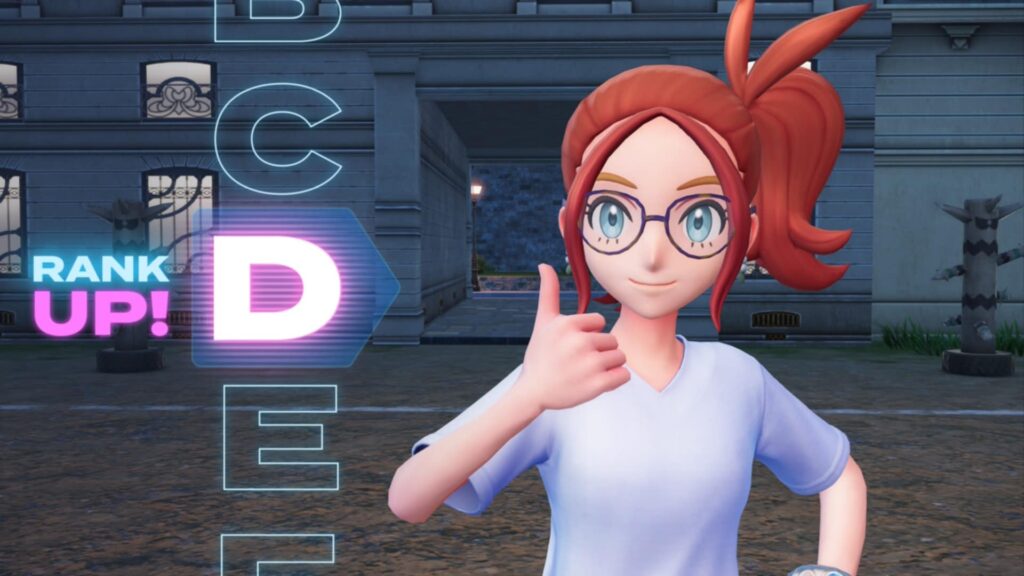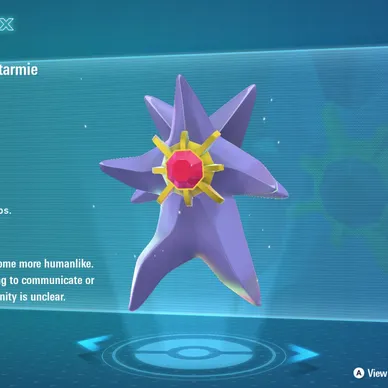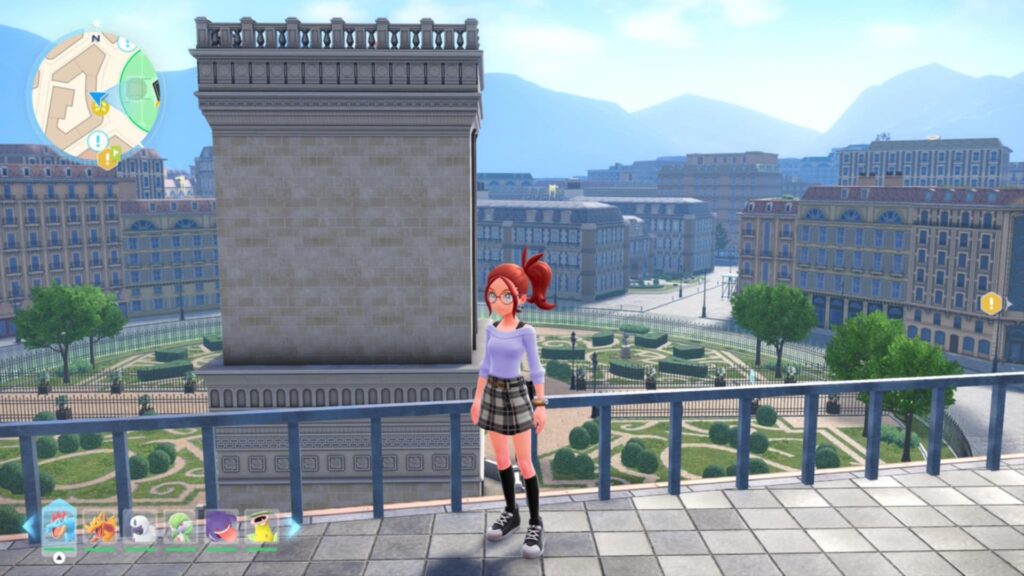Pokémon can mean something completely different depending on the gamer you’re talking to. Millions continue to enjoy the franchise, whether it’s the endless merchandise, the bizarre speculative market among young fans of the TCG, or the games themselves. However, many jaded series veterans feel developer Game Freak isn’t putting the effort into the games that they should be.
Perhaps then it’s best to start a review of the latest Pokémon game by explaining my own relationship with the franchise. I grew up as a Pokémon kid during the height of the original releases and the trading card game (TCG). I played each game religiously into my 20s, but around the time of Pokémon Black and White, fatigue began to set in. I simply wasn’t excited to boot up a new game, raise a new stable of monsters, and set out once again to defeat eight Gym Leaders in compelling, yet stale, turn-based combat.
I was caught off guard by 2022’s Pokémon Legends: Arceus, which offered possibly the greatest deviation from the formula yet seen in the series. That game showed The Pokémon Company was willing to experiment with their massive cross-media juggernaut, so long as it was under the protective barrier of a “spin-off” title. Lessons learned from that experiment carried over to Pokémon Scarlet and Violet that same year—games which are almost universally agreed upon to be a low point of the series. Still, the developers showed a keen awareness that the traditional model had become stale and that innovation must happen. It’s under this context that we arrive at the series’ latest incarnation, Pokémon Legends Z-A.

The game breaks the series rules in the best way possible
The people inhabiting the world of Pokémon have a serious, unhinged dedication to forcing their adorable companions into battle. Several times, I audibly laughed as I entered a restaurant in the game’s Paris-like city, only to find a massive battle arena surrounded by posh, upscale diners. Are you telling me in this world you can’t even enjoy a night out with your partner without battling your pets? The more you think about the logic of the Pokémon world, the more you begin to understand just how unhinged it is. But, needless to say, battle is 90% of what you do in these games, and it’s here that we get the biggest change the series has ever seen.

Gone is the turn-based combat of yesteryear. Battles now take place in real time, meaning timing and positioning are huge parts of the strategy. While your Pokémon are still limited to four moves at a time, players now have to carefully consider how each move affects the flow of the battle. A well-timed Protect or Reflect can cancel your opponent’s major damage-dealing attack, leaving them vulnerable for several seconds. Moves like Quick Attack or Teleport now physically change the Pokémon’s position, which can make ranged attacks miss completely.
You don’t have direct control over your Pokémon’s position; you can only call them to your side by releasing the targeting trigger. This means you also have to watch your own position in the 3D battle space.
To put it simply, this is what I’ve been wanting from the series for years. Battles are endlessly engaging, addictive, fast-paced, and exciting. Every new move is a new strategy: you can stack debuffs and switch Pokemon for a knockout blow, or watch my precious Feraligator rely on a barrage of low cooldown melee attacks to overwhelm an opponent before charging up a longer, deadlier attack. I never got sick of experimenting with this new combat system, even as the context for why I was engaged in these battles began to waver over time.

It’s actually a good thing this game is pretty short
Accompanying the change in battle systems is also a shakeup in the classic Pokémon formula of challenging progressively hard Gym Leaders. In its place is an interesting system: by day, players complete side quests and collect new Pokémon, but at night, they engage in a city-wide battle royale. This is how you climb the titular A-Z ranks and become the region’s champion.
The day/night cycle is relatively quick. Players explore the world in the daylight, but as night falls, a section of the city is declared a “battle zone,” where trainers congregate to compete and score points toward their next sanctioned match.
Battle Zones are interesting. There’s a weird, almost Assassin’s Creed-like element to climbing the city’s highrises and striking unaware opponents. Because of the switch to real-time combat, you can actually attack an opponent before they’ve noticed you, giving you a major advantage. In practice, though, these opposing trainers are absolute cannon fodder for your overpowered party. Since NPC trainers only hold two or three Pokémon, the battles are often over in less than a minute, rarely giving you a satisfying experience.
Instead, the game becomes a race against time. You try to score as many points as possible before daybreak, hoping to earn enough to move the story forward to the next climactic ranked battle. What sounds shallow can also be quite addictive, but it gets very repetitive the 15th or 16th time you’ve done it. Soon, you’ll find yourself wishing you could skip right to the story-driven moments where your trainer encounters an eccentric cast of ranked Pokémon trainers—they often have bizarre sub-plots you must solve before they’ll agree to battle you in a coveted ranked match.
Slightly more interesting (but also extremely repetitive) are the showstopping Mega Evolution battles that are mandatory for story progression. These battles against rogue Pokémon are climactic arena spectacles where the game tests players to their limits. Akin to a boss fight, these battles utilize unique mechanics where you need to dodge, counter, and adjust while still commanding your virtual pet to deal damage in a war of attrition. You must glean enough shiny orbs from the opponent with your attacks to trigger your own Pokémon’s Mega Evolution and take the battle to the enemy. Again, after doing it 15+ times, the shine starts to wear off, but these were always the most interesting battles in the game.
Mega evolutions are kinda… stupid
Maybe a controversial take, but I’ve always found the idea of Mega evolutions or whatever the term they use for them, to be a bit of a bore. This system limits your stable of viable Pokémon to just the ones that can Mega Evolve. Plus, the art direction for Mega-Evolved Pokémon can be flat-out embarrassing more often than not. Since the days of Diamond and Pearl, I’ve often wondered if artists at The Pokémon Company are in an endless race to design the stupidest Pokémon they can think of, and Mega Evolution just introduces endless disappointment in the art and concept department. As far as I know, these games introduce no new Pokémon, but they do introduce new Mega Evolutions.

Image Source: IGN.com
In Z-A, Mega Evolutions take center stage in the story. The player finds themselves facing an epidemic of rogue evolutions: wild Pokémon are appearing throughout the city, set to wreak havoc unless the player can quell them. These occurrences seem to coincide with a city-wide restoration project aimed at bridging the world of Pokémon and human urban development.
The world of Pokémon is terrifying if you think too much about it
The entire game takes place within Luminose City, the Persian-inspired locale last seen in the 3DS entry Pokémon X/Y. Legends serves as a soft sequel, though to be frank, I had completely forgotten the story of the underwhelming 3DS game, and its recurring characters and callbacks were completely lost on me. Still, I found the new cast of characters to be charming, if safe, entries into the bizarrely complex lore of Pokémon.
Luminose City itself is somewhat small and definitely a victim of copy+paste environments and assets spread over a relatively small explorable space. This is a disappointing indication of just how little money is spent on these games (a reported $13 million development budget), which for a game that’s part of the single most profitable IP humanity has ever created.

While the primary narrative thrust is to climb the ranks of the Z-A tournament, an early story beat thrusts the player up several ranks into the upper echelon of Pokémon experts. This felt like a cynical narrative moment designed to get you into the main story sooner. I was disappointed that the game’s main gimmick was abandoned so quickly, but it’s understandable as the story becomes more in-depth and the ranked trainers become less of a nameless opponent and more of a narrative drive. Despite all this, Shakespeare this is not. Pokémon remains a flat, relatively uninteresting tale where the answer is almost always “we won because of the power of friendship.”
We will never get an AAA Pokémon
This leads me to perhaps the most jarring experience of playing this new Pokémon game. As the game began and the crisp, polished modern character models appeared on screen in the opening moments, I was mainly shocked at one reveal: Once again, no voice acting.
For a game seemingly aimed at a younger audience, it is absolutely mind-boggling that these games rely so much on reading so much text in boxes. It’s been 30 years since voice acting became standard, yet Pokémon remains stubbornly in the past, by choice it seems.
This issue is wrapped up in what sometimes comes off as a cheap product. It creates an unshakeable feeling that the developers simply weren’t willing to foot the costs to produce a modern game. Environments repeat endlessly, featuring the same buildings over and over, with flat textures that just imply windows and doors.

It all seems so shallow and supports the opinion that developer Game Freak doesn’t see nearly as much value in the games themselves as they do in the merchandise. They’re doing the bare minimum needed to keep the money machine alive. It’s disappointing, to say the least. But at this point, I simply don’t believe better polish will ever be a priority; the franchise makes money hand over foot anyway, so there’s no incentive for The Pokémon Company to invest further in these titles.
Still, credit where credit is due: compared to the last Pokémon title, Scarlet and Violet, Z-A absolutely crushes it performance-wise. For all the bluster of the last failed Pokémon experiment, Z-A at the very least runs stable and bug-free (at least on the Switch 2 version I played).
So is this the future of Pokémon?
As alluded to earlier, these games seem designed to be the experimental playground for The Pokémon Company to try and break the formula we’ve all become accustomed to. In that sense, Pokémon Legends: Z-A is a success, demonstrating that we don’t need to adhere to the tried-and-true conventions of the franchise.
To be fair, I’m not a competitive player, so I have no idea what the competitive scene thinks of these changes. But frankly, it shouldn’t matter. The competitive scene is a drop in the bucket compared to the core audience, and Pokémon shouldn’t cater to the hardcore. Still, the new combat system seems like a great starting point for building a competitive scene, and it will be interesting to see how this evolves over time.
As a single game, though, removed from the context of the greater Pokémon environment, I can confidently say I had about 15 hours of fun out of the roughly 30 hours I put into the game, but I definitely began to feel burnout in the back half. The new combat system is a winner, and collecting all of these little bastards remains as addictive as ever. However, without a strong story or narrative drive, the repetitive gameplay wears thin.
That being said, if The Pokémon Company takes the right lessons away from Z-A, I find myself excited for the future of Pokémon for the first time in a decade. But I’m also preparing myself for whatever disappointment happens next.
